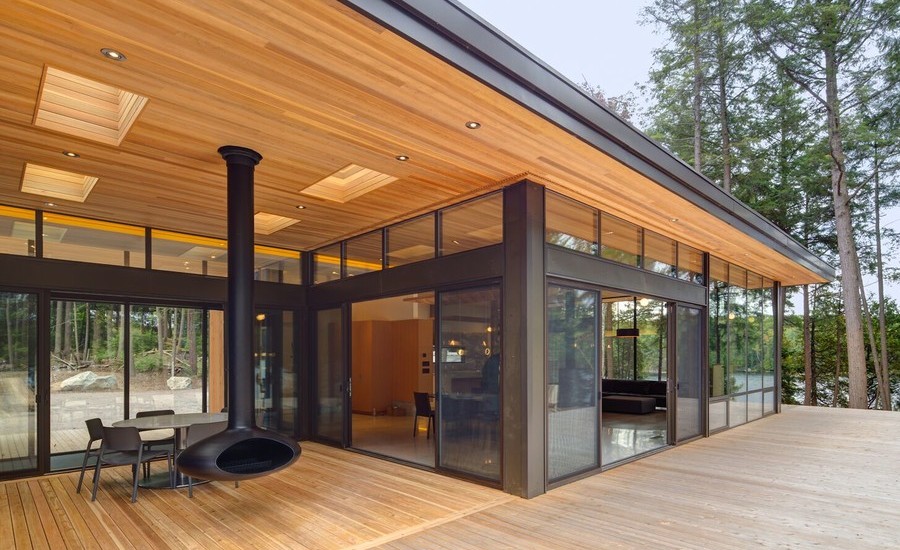Replacing glass on windows in a high-rise building is a combination of technical skills and practical knowledge. On the surface, it may seem like an incredibly difficult task. Experienced glass installers can replace glass up on high floors relatively quickly and easily. The most important thing to keep in mind is safety. After all, working up on high floors can be potentially dangerous. In this article, we are going to explore what a high-rise window is, the problems associated with them, how windows can be repaired, and glass installed appropriately.
What Are High-Rise Windows?
Windows on high-rise buildings have a special purpose. Unlike regular windows in a home, windows in a high-rise building need to withstand harsh conditions. This is why high-rise windows are no ordinary windows.
Firstly, high-rise windows are double-paned. They are made up of two pieces of glass about 6 mm thick each. This provides maximum protection against a high-rise building’s biggest enemy, wind. The higher the building, the higher the wind speeds. Therefore, high-rise windows must offer additional protection. If the glass panes are too thin, they can crack or completely break due to strong wind speeds.
Secondly, high-rise windows need to withstand significant temperature changes. On higher floors, the temperature tends to be cooler than on lower floors. However, the temperature may increase when the sun shines directly on it. These temperature changes can weaken glass over time, thereby causing it to crack or break.
Thirdly, high-rise windows need to seal off internal environments appropriately. This is important for heating and air conditioning. If windows don’t seal properly, heating and air conditioning cannot work properly.
Why Are the Problems with High-Rise Windows?
There are three main reasons why glass panes on high-rise windows need to be repaired before the glass cracks or breaks completely.
- Leaks. A leak is when moisture enters the building from the outside. This moisture can come from rain or snow. When moisture gets inside the window, mold and mildew can form. Over time, this buildup can compromise the window’s integrity. In the worst of cases, a glass pane can become dislodged by leaning or pushing on it.
- Warping. Warping generally affects the window’s frame. This can be the result of too much moisture getting between the glass and the frame. This is a consequence of age or structural damage. Warping is usually caused by leaks. Thus, the source of the leak needs to be identified. This condition requires both glass and frame replacement. It is rare to have glass warp, though cracks may occur due to a warped frame.
- Clouding. Clouding affects the glass itself. This is the result of moisture getting in between the glass panes. Clouding is evident by the darkening or staining of the glass itself. Clouding also occurs due to the changes in temperature. Constant expansion and contraction resulting from sunlight can weaken the glass. It is common to have glass cracks as a result of strong winds especially if objects or debris hit the window at high speeds.
Undoubtedly, the most common factor affecting high-rise windows is moisture. This is why regular inspection is recommended. When leaks and filtrations are caught early, they can be remedied more easily and cost-effectively.
How to Install Glass on High-Rise Windows?
Installing glass on high-rise windows is not an easy task. It requires special equipment, especially the higher up the windows are. Also, it is dangerous for installers due to the height of the building. This is why specialized glass installation companies should embark upon this task. This is important to note as work done by unauthorized contractors may lead to insurance coverage issues down the road.
The biggest challenge when installing high-rise window glass is the weight of each pane. High-rise panes are significantly heavier due to their thickness. Regular home windows are generally 1 mm to 2 mm thick. In contrast, high-rise panes can be 6 mm thick or more.
Glass installation companies mostly use cranes to install outside panes. Installers usually stand on a gondola or platform while they remove and install glass. Depending on the size of the panes, two or three individuals may need to move each pane. To do so, suction tools are used. These tools hold panes firmly as installers manipulate and fit the glass. The crane is moved to aid installers in properly placing the glass. Once the glass is fitted appropriately, the frame and glass are sealed off completely. Afterward, installers conduct tests to ensure there is no leakage.
As a safety precaution, the ground below is cleared of any bystanders. After all, a falling glass pane is quite dangerous. The inside panels are much easier to install as they don’t require cranes or any type of elevation. In some cases, smaller equipment can be used to lift panes off the ground.
What Type of Maintenance Does Glass on High-Rise Windows Need?
The most important maintenance issue for high-rise windows is sealing. As such, regular inspections should look for any broken seals that would allow moisture to get in between the panes. Inspections should also focus on frame warping and pane clouding. Most of these inspections can be done visually without having to step outside.
Building owners usually schedule an annual inspection for insurance purposes. After all, cracked, leaking, or loose panes can compromise the entire building’s integrity. Even one missing pane can cause the entire building’s stability to be severely compromised, especially at high altitudes. Therefore, any signs of damaged window frames or glass panels should be reported and addressed immediately. Any replacements or repairs should be done by properly licensed contractors. Proper maintenance of high-rise windows is not a typical DIY project.
In general, installing glass on high-rise windows requires a fair degree of skill and technical know-how. As such, duly licensed contractors ought to be hired for window repairs and glass installation. The key is to have regular inspections. Regular inspections allow spotting of problem areas before they become a serious issue. In some cases, problems can be solved before glass panes and window frames need replacing. Ultimately, this saves both time and money.




















